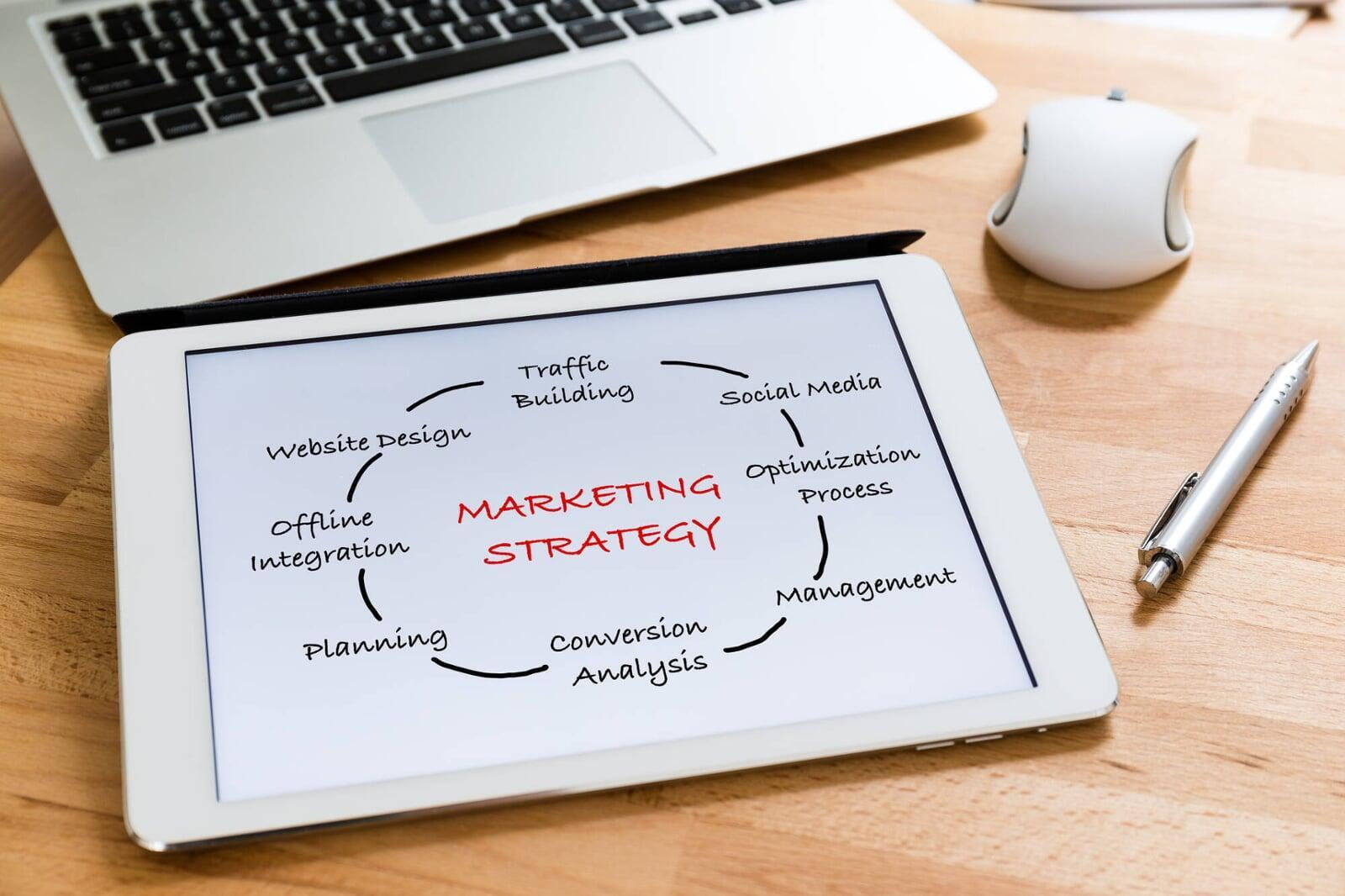
In today’s world, digital marketing is a crucial component of a successful marketing strategy. There are many challenges faced in marketing, some of which are specific to digital marketing that might catch even veteran marketers off-guard.
We’ll highlight some of the most common problems marketers face and how a comprehensive content strategy can address those issues. With the right planning and business strategy, you can avoid the pitfalls and create a thriving and sustainable customer base using proper digital marketing.
Common Global Marketing Challenges
Common Global Marketing Challenges
One of the biggest challenges every marketer faces is lead generation and traffic flow. Without fresh leads, sales and revenue will eventually dry up. A business’s customer base must be continually refreshed with new patrons to be successful.
Generating High-Quality Traffic and Leads
Generating High-Quality Traffic and Leads
In terms of generating leads, numbers aren’t the end of the story. High-quality leads and traffic are more prominent than regular traffic. A high-quality lead has a better-than-average likelihood of becoming a sale. Likewise, high-quality traffic contains a significant number of interested viewers likely to convert into customers.
Attracting quality traffic isn’t easy. Competition continues to grow in every field, and the demand for people’s attention is at an all-time high. Furthermore, the call for people’s attention is greater, but their attention spans are shorter than ever before.
So, the increase of competition and demand for attention, together with people’s shorter attention spans, create a unique challenge for traffic generation.
Additionally, there’s an ever-increasing number of marketing channels, including various digital platforms. The sheer number of choices can lead to overcommitments on too many platforms or analysis paralysis on the other end. Professional marketing consulting can help you cut through the fog of confusion with a focused marketing plan.
Evaluate Your Content
Evaluate Your Content
While there’s no magic wand to guarantee that high-quality traffic will flock to your marketing campaigns, your content is essential. Besides your products, in the digital market-space, your content is always king.
It may be necessary to take an honest look at your content and analyze how useful and attractive it is to your target audience. One helpful question to ask would be: If I was the customer, why would I come here?

The content you create should be valuable enough for your audience to hook their attention and leave them wanting more. If your content is bland, the potential customer won’t come back. If your content is insufficient or irrelevant, they will look elsewhere and often purchase from a competitor.
Finding the Right Resources
Finding the Right Resources
Marketing resources can include things as research analytics and distribution channels. Specific analytics and platforms are better than others. While it’s easy to get buried in a plethora of statistics, an experienced marketing agent recognizes critical data points that mark performance.
Distribution channels are various and vast, especially in the digital space. Everything from blogs to social media and online marketplaces are possible marketing resources.
Thorough research is essential to choose the proper platforms to target your specific audience. For example, selecting the right medium for your advertising content can significantly influence your success rate. Does your audience prefer to read articles, watch videos, or listen to audio? This data is vital to understand your audience and can shape your strategy development.
Thinking Outside the Box
Thinking Outside the Box
In addition to “the big three” of social media, blogs, and online marketplaces, you should consider other avenues depending on your product. Webinars can be a great way to attract newcomers and promote many of your products and services together.
Search engine optimization (SEO) is another useful resource that often gets overlooked. Good SEO requires expertise to research and analyze the various keywords and skills to write optimized content. Once your content is optimized, search engines will rank your web pages higher and attract more traffic.
Another ignored resource is backlinks. In the early days of search engines, backlinks were the primary way to find and rank a page’s worth. The more links your page has leading to it from outside sources, the higher your “importance” rating would be. This ranking process has changed somewhat over time, but that doesn’t mean backlinks aren’t necessary.
For some people, backlinks may be the only way they find you. If you think of backlinks as inroads, you want your potential customers to have as many ways to reach your products as possible.
High-value back-linking requires research to find the best outside sources to link back to you. It wouldn’t make sense for a company that sells tractors to link to a pastry shop. Low-grade links will receive minimal clicks since they likely won’t match the customer’s interest. Part of your marketing strategy execution should include these often overlooked areas.

Generating ROI
Generating ROI
Your marketing budget is ultimately an investment, the goal of which is to generate a return on that investment (ROI). The return on your marketing investment directly correlates to sales. Therefore, to generate ROI, your marketing campaign must be successful.
Tracking your ROI is a crucial step in measuring marketing performance. Frequently, companies won’t even notice specific issues until it affects their bottom line. A skilled marketing specialist will help you analyze your relevant metrics, including ROI, cutting through the irrelevant information, and deriving real performance numbers.
The resulting data will offer a “snapshot” that reveals how your marketing campaign performs and any potential issues. Ironically, examining your current ROI can increase future ROI by enhancing marketing performance.
Stay Focused on Your Goals
Stay Focused on Your Goals
One of the main ways to increase ROI is to keep a clear vision of your goals without straying. A marketing strategy can quickly become clouded with side-projects, and wasteful spending often occurs when aims become muddied. You can probably think of a few advertisements that didn’t quite hit the mark.
Confusion is the natural kryptonite of success. A confused and convoluted marketing campaign will turn away customers as quickly as a bad product. If customers don’t understand the message, they certainly will not buy the product.
Proper planning is key to avoiding chaos and generating a solid return on investment. Marketing operations consulting is an essential tool for acquiring and maintaining sustainable ROI for your business. At Universal Creative Solutions, our team of experts will assist you with focused, clear goals and a plan-of-action to achieve your success.
Budget Limitations
Budget Limitations
Your marketing budget is closely related to return on investment. If your ROI is currently low, it can strain your resources, interfering with future plans.
A budget must be strictly adhered to when income is not guaranteed. Overspending can be a significant problem for any company, and budget requirements can be tough to predict.
When it comes to marketing budgets, costs can change dramatically and even dynamically with pay-per-click (PPC) and impression-based advertising. While it may not be possible to foresee every aspect of a budget, a marketing consulting agency can help you accurately predict expenditures.
Knowledge is Essential
Knowledge is Essential
To calculate a functionally accurate budget, you need to know several data points. Your distribution platforms, printable materials, equipment, target analysis, and competitor research need consideration.
A general rule-of-thumb for a marketing budget should be around 12% of your total gross income. This number can be higher or lower depending on your needs and goals, but it’s a good starting point.
When making budgeting decisions, it’s essential to have a clear vision of your brand. Think about what your company image is and how best to communicate your brand voice. A strategy consulting specialist can help you develop methods to promote your company best while staying within budget. Staying within budget is a crucial step to ensuring continual profitability.
Providing Consistent Quality Content
Providing Consistent Quality Content
Earlier, we touched on the importance of content for attracting high-value traffic. Now we’ll look at the necessity of consistency regarding that content.
High-quality content attracts visitors, but consistent, high-quality content will keep them. If your material’s standard varies, it can drive customers away as quickly as it attracts them.
Think of your content as the face and personality of your business. Whether you’re strictly digital or traditional brick-and-mortar, your content will have a high reach and visibility. Inconsistent and unreliable content prompts customers to question your business’ quality as a whole. These customer doubts can cause lost sales and damage your company’s reputation.
Investing in Content
Investing in Content

Quality content costs money and time. When you think of content as another tool in your advertising arsenal, it starts to make sense. Whether you need articles for a blog or multimedia for your social media pages, it all requires skilled labor. Writers, artists, graphic designers are all part of your marketing team, and they’re essential to produce consistent, high-quality content.
Since content is the “face” of your business and the first thing your audience sees, you always want it to be top-notch. Just as poor content can create doubt in your audience, quality content builds trust.
As trust in your business grows, it will have a “snowball effect,” leading to organic growth. People will begin to spread good words about your business, creating more leads naturally. So you can see how investing in quality content can lead to large gains in the future.
Tools and Technology Available
Tools and Technology Available
Though technology has made all businesses inherently global, it can still be quite challenging to use the tools available properly. Even today, many companies struggle with using technological channels effectively for digital marketing.
While there are more businesses online than ever before, many companies are not taking full advantage of their opportunities. Most people think of marketing technology like websites and mailing lists, but those are just two aspects.
It can be overwhelming to decide on which technologies to incorporate into your content marketing strategy. Often, marketing teams will choose to implement only the basics in an attempt to keep things simple. While there is some merit to that idea, it also can be a wasted opportunity.
The challenge comes from investing your time and money in the right tools and technologies for your specific needs and goals. Strategy consulting can be crucial in choosing which tools are suitable for your brand and your audience.
Opening the Toolbox
Opening the Toolbox
One of the most potent tools that doesn’t get enough attention is automation. Every business owner knows that time is money; you can use automation to save your company both.
Many automation solutions are available for marketing, combining analytics gathering, customer lists, and inventory into a unified package. Having these features and statistics gathered automatically can reduce some of the workloads, allowing your team to focus on the results instead of data collection.
Taking full advantage of automation can reduce stress and confusion by helping to clarify your performance statistics. You will be able to more easily track what your customers are doing at any given time, how your products are performing, and future projections.
Data and Information Overload
Data and Information Overload
While you can use automation to lessen your marketing team’s burden, you must also consider the other side of the coin. It’s easy to bombard your audience with information and advertising that they “tune out” and stop paying attention.
The effect of information overload on consumers can be a big challenge for marketers looking to reach new audiences. Everything is vying for people’s attention. How do you break through the proverbial wall of disinterest? Answering that question has been the focus of business solutions firms since the technological revolution began.
Keeping Things Interesting
Keeping Things Interesting
To combat disinterested viewers suffering information overload:
- Keep things exciting and energized.
- Always accentuate your business’s uniqueness and style.
Take as an example, two sandwich shops. If neither one is unique and both serve the same type of sandwich, both will be mediocre. Yet if one can find an angle, a small edge that makes them stand out from the competition, they can be hyper-successful.
Finding your angle might sound easy, but it’s often one of the toughest challenges faced in marketing. A business owner is usually so closely embedded in the company that an outsider’s perspective is needed.
Another way that you can combat information overload is by changing things up. A simple change of the company’s website could be all that’s needed, or it could be something grander. However, research shows that if a brand stagnates too long, people will lose interest even if they like the product.
Avoiding stagnation doesn’t always mean a complete brand overhaul. A slight tweak of the logo, slogan, or message may be enough. A good strategy consultant will pick up on the signs of a stagnating brand long before symptoms start showing in the sales numbers. They’ll be able to offer advice on how to remain relevant to your audience.
Content Marketing for a Global Audience
Content Marketing for a Global Audience
Along with relevancy, we must again remember that because of the internet, all companies are nearly global. Staying relevant, exciting, and enticing to an international space is one of the most prominent problems marketers face.
Among the tools needed for global strategy execution, demographics analysis is crucial for understanding the global market. Some companies develop only a single ad campaign and distribute it globally to discover that their marketing fails miserably. Each culture has different ideas, idiosyncrasies, and trends you must incorporate into your campaigns.

Developing separate campaigns for different markets may be more costly, but the return on that investment will be worth it. As your campaign connects with people personally, they’re more likely to convert to a sale over time.
International SEO & Retargeting
International SEO & Retargeting
An essential step in developing ad campaigns for the global market is region-specific search engine optimization (SEO). When choosing keywords, you should consider the intricacies of language. Even among regions that share a common tongue, vernacular can change in crucial ways.
When it comes to key phrases, grammar and spelling are vital to building trust in your brand. Spelling and grammar errors will instantly give your company an unprofessional appearance and cause your brand to look sloppy and unreliable. If a business doesn’t even proof-read its text, why would a customer trust any of their work? It’s crucial to hire quality writers and editors to localize your content for the area you are marketing in, to give your text that extra bit of polish.
Don’t Give Up, Retarget
Don’t Give Up, Retarget
Repetition is one of the keys to good marketing. Most internet shoppers don’t purchase on the first visit. The typical customer adds items to their cart and then checks other sites to find better deals.
Retargeting is the marketing strategy of drawing the customer back to your site to complete the purchase. Retargeting requires planning and a good knowledge of your target demographic to understand their thought process and typical behavior patterns.
Website Management
Website Management
Most of the strategies we’ve explored would be nearly impossible without proper website management. A decent website requires reliable hosting, adequate bandwidth, and a skilled webmaster or team to maintain it. Additionally, your website also needs dedicated content, as we’ve already mentioned.
Many companies neglect their website, even though it’s the foundation of their online business. Many sales are lost each year due to website malfunctions, lack of content, or high-speed bandwidth shortage.
The typical internet user will begin to lose interest with a mere one-second delay in your page speed. Optimizing your website takes a high degree of coding skill but makes a substantial difference in your total sales.
In terms of hosting, any downtime means instant sales loss. Just like closing a physical store, if customers can’t reach your website, they can’t purchase anything.
Take care when considering different website hosts, especially in a global market. A host that maintains web servers in one region may have poor performance in another. Therefore, a host with servers distributed throughout the world is an ideal solution.
Remote Team Management
Remote Team Management
We live in a connected world, and the solutions for remote meetings and get-togethers are continually evolving. However, there are still challenges to overcome regarding managing a remote team. The main obstacle being time-zones.
While it may be the middle of the workday for some members of your team, it could be the middle of the night for others. Choosing the appropriate time for a meeting where all members are available can be difficult.
Another potential issue is bandwidth. Even though you manage to get everyone online simultaneously, that doesn’t mean the connection will always be smooth. If the lag is too great, video conferencing participation will not be possible. In such cases, text chat, e-mail, or even regular telephone conversations may be alternatives.
Marketing Through COVID-19
Marketing Through COVID-19
In 2020, without a doubt, the biggest challenges faced in marketing were adapting to the effects of the pandemic. Many businesses suffered losses, and some closed their doors forever because they couldn’t adapt to the restrictions.
Regular in-store traffic was reduced dramatically or eliminated, and a digital storefront became the only way to conduct business. Internal marketing teams were forced to hold virtual meetings and needed to purchase extra equipment to work remotely. These changes added to the personal stress and expense of the business and its employees.
Customers also were feeling the effects of the changes. Fear and uncertainty do not create a good marketing environment, and people were spending less than usual on non-essentials.

Be Supportive
Be Supportive
We’ve discussed trust a lot in this article, and when it comes to the pandemic, worries and fears tend to run high. When emotions are hot, it’s all the more critical for your business to project a strong, supportive and calm image. Now is the time to build strong trust connections with your customers. Support their efforts, calm their fears, and be the pillar of strength that they can rely on. In other words, show them that you care.
You’re not just a cold, faceless entity out to grab their last few pennies. You’re a neighbor and a friend that they need in difficult times. As you project that image, you’ll be building deep connections that will create lifelong relationships with your audience. This marketing strategy is the ultimate achievement and will lead to natural organic growth far beyond any traditional ad campaign.
Conclusion
Conclusion
Throughout this article, we’ve explored the various challenges marketers face in this modern world and tips to overcome them. While the information here is certainly valuable, there is no substitute for professional marketing operations consulting.
At Universal Creative Solutions, we stand ready to guide you through the process of building a masterful marketing campaign. We will assist you with planning, analysis, and execution, ensuring that you achieve your goals and then surpass them.
Contact us today, and let our marketing experts bring your business to the next level and turn your dreams of today into the realities of tomorrow.

